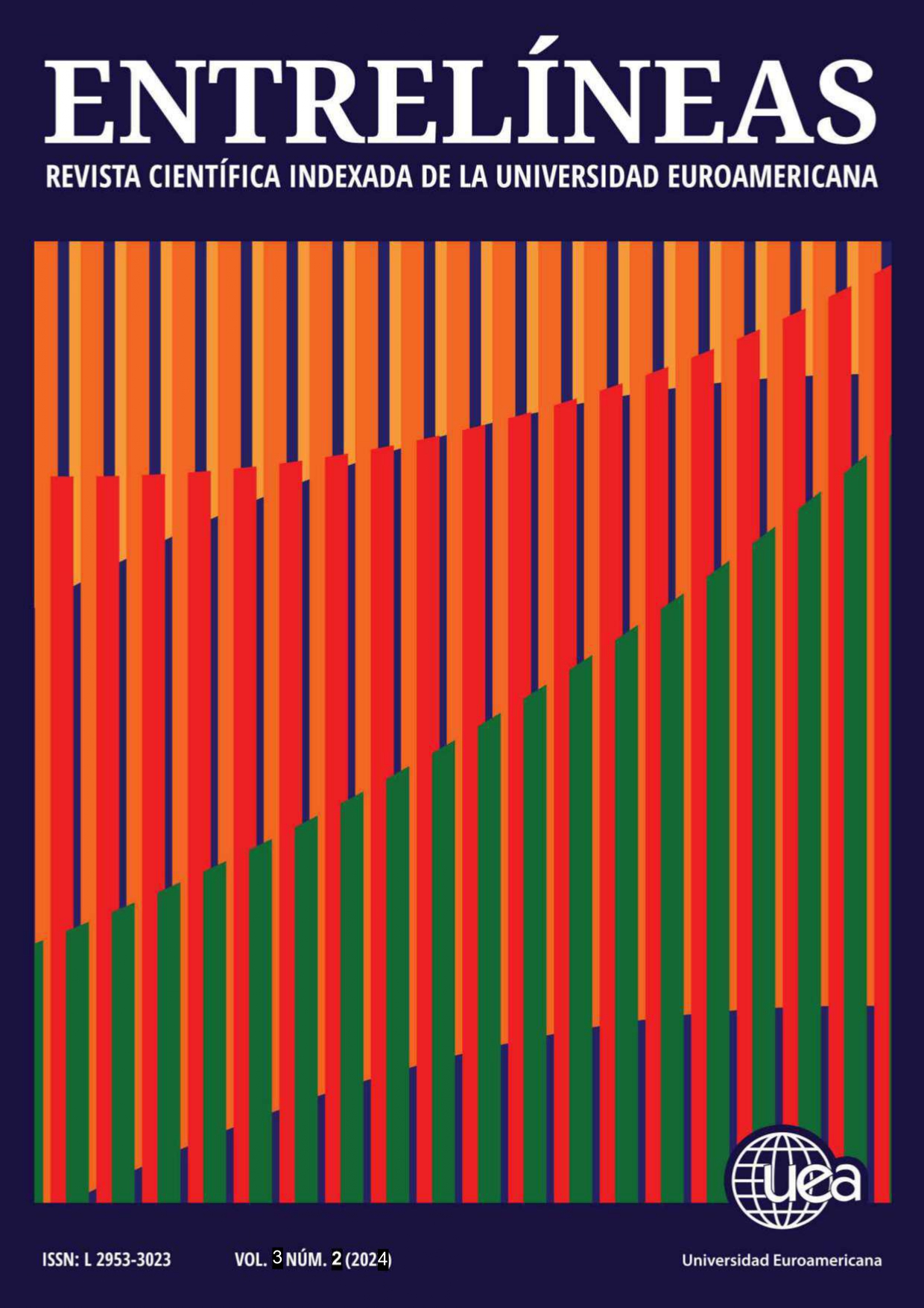Social marketing to minimize environmental damage, using the 4Ps
DOI:
https://doi.org/10.56368/Entrelineas322Keywords:
marketing, social responsibility, social change, environment, 4Ps of marketingAbstract
In recent years, there has been growing interest in integrating social sciences into environmental initiatives through marketing, with a focus on facilitating and stimulating value exchanges. With the advances that have been made from the perspective of business marketing to develop models that influence human behaviors harmful to the environment, environmental social marketing emerges as an essential component in the pursuit of these objectives. To define the use of social marketing in mitigating environmental damage using the 4Ps, a desk study was conducted that examined how social marketing theories, as well as the 4Ps identified by Wood, are applied in related real-world research and campaigns. with the environment. The results revealed the potential to develop effective and sustainable programs that encourage positive changes in society and the environment. Among the results, the importance of continuous promotion to sustain long-term behavioral changes was highlighted, concluding that the repositioning of social marketing represents a real opportunity to more effectively address environmental challenges, promoting sustainable behaviors and contributing to environmental protection.
Downloads
References
Cismaru, M., Lavack, A. M. & Markewich, E. (2009). Social marketing campaigns aimed at preventing drunk driving: A review and recommendations. International Marketing Review, 26(3), 292-311. https://doi.org/10.1108/02651330910960799
Cook, T. D. & Reichardt, Ch. S. (1986). Método cuantitativo y cualitativo en investigación evaluativa, Edición Morata S.L.
Corrigan, P. W. (2011). Best practices: Strategic stigma change (SSC): Five principles for social marketing campaigns to reduce stigma. Psychiatric Services, 62(8), 824-826. https://doi.org/10.1176/ps.62.8.pss6208_0824
Evans, W. D. (2006). How social marketing works in health care. British Medical Journal, 332(7551), 1207-1210. https://doi.org/10.1136%2Fbmj.332.7551.1207-a
Evans, W. D. (2008). Social marketing campaigns and children's media use. The Future of Children, 181-203. https://doi.org/10.1353/foc.0.0009
Evans, W. D., Pattanayak, S. K., Young, S., Buszin, J., Rai, S., & Bihm, J. W. (2014). Social marketing of water and sanitation products: a systematic review of peer-reviewed literature. Social Science & Medicine, 110, 18-25. https://doi.org/10.1016/j.socscimed.2014.03.011
Friedman, A. L., Allison, L., Kachur, R. E., Noar, S. M. & McFarlane, M. (2016). Health communication and social marketing campaigns for sexually transmitted disease prevention and control. Sexually Transmitted Diseases, 43, S83-S101. https://doi.org/10.1097/OLQ.0000000000000286
Goi, C. L. (2009). A review of marketing mix: 4Ps or more? International journal of marketing studies, 1(1), 2-15. http://dx.doi.org/10.5539/ijms.v1n1p2
Green, K. M., Crawford, B. A., Williamson, K. A. & DeWan, A. A. (2019). A meta-analysis of social marketing campaigns to improve global conservation outcomes. Social Marketing Quarterly, 25(1), 69-87. https://psycnet.apa.org/doi/10.1177/1524500418824258
Hastings, G. & Saren, M. (2003). The critical contribution of social marketing: theory and application. Marketing theory, 3(3), 305-322. https://doi.org/10.1177/147059310333005
Jaramillo Echeverri, L.G. (2003). ¿Qué es epistemología? Mi mirar epistemológico y el progreso de la ciencia, Cinta de Moebio 18, 1-7. https://dialnet.unirioja.es/servlet/articulo?codigo=858711
Johnson, S. L., Bellows, L., Beckstrom, L. & Anderson, J. (2007). Evaluation of a social marketing campaign targeting preschool children. American journal of health behavior, 31(1), 44-55. https://doi.org/10.5555/ajhb.2007.31.1.44
Kotler, P. & Zaltman, G. (1971). Social marketing: an approach to planned social change. Journal of Marketing, 35, July, 3-12. https://doi.org/10.1177/002224297103500302
Kotler, P., Roberto, N. & Lee, N. (2002). Social marketing: improving the quality of life. Sage.
Lefebvre, C. (2007). The new technology: The consumer as participant rather than target audience. Social Marketing Quarterly, 13(3), 31–42. https://doi.org/10.1080/15245000701544325
Luca, N. R. & Suggs, L. S. (2013). Theory and model use in social marketing health interventions. Journal of health communication, 18(1), 20-40. https://doi.org/10.1080/10810730.2012.688243
Maibach, E. (1993). Social marketing for the environment: Using information campaigns to promote environmental awareness and behavior change. Health promotion international, 8(3), 209-224. https://doi.org/10.1093/heapro/8.3.209
Padrón, J. (2007). Tendencias epistemológicas de la i investigación científica en el siglo. XXI., Epistemología de las Ciencias Sociales 28, 1-28. https://dialnet.unirioja.es/descarga/articulo/2284734.pdf
Peattie, K. & Peattie, S. (2009). Social marketing: a pathway to consumption reduction? Journal of business research, 62(2), 260-268. https://doi.org/10.1016/j.jbusres.2008.01.033
Ramos, C. A. (2015). Los paradigmas de la investigación científica. Avances en Psicología, 23(1), 9-17. https://doi.org/10.33539/avpsicol.2015.v23n1.167
Rondón García, Y. (2009). La evolución de los paradigmas en las ciencias sociales y su incidencia en los procesos gerenciales, Saber, 21 (2), 188-194. https://www.redalyc.org/pdf/4277/427739440012.pdf
Salazar, G., Mills, M. & Veríssimo, D. (2019). Qualitative impact evaluation of a social marketing campaign for conservation. Conservation Biology, 33(3), 634-644. https://doi.org/10.1111/cobi.13218
Sampogna, G., Bakolis, I., Evans-Lacko, S., Robinson, E., Thornicroft, G. & Henderson, C. (2017). The impact of social marketing campaigns on reducing mental health stigma: Results from the 2009–2014 Time to Change programme. European Psychiatry, 40, 116-122. https://doi.org/10.1016/j.eurpsy.2016.08.008
Tapp, A., & Spotswood, F. (2013). From the 4Ps to COM-SM: reconfiguring the social marketing mix. Journal of Social Marketing, 3(3), 206-222. https://doi.org/10.1108/JSOCM-01-2013-0011
Truong, V. D. (2014). Social marketing: A systematic review of research 1998–2012. Social Marketing Quarterly, 20(1), 15-34. https://doi.org/10.1177/1524500413517666
Ventura León, J.L. (2017). La importancia de reportar la validez y la confiabilidad en los instrumentos de medición: comentarios a Arancibia et al, Medica Chilena 145, 818-820. http://dx.doi.org/10.4067/s0034-98872017000700955
Weinreich, N. K. (2006). What is social marketing. Weinreich Communications, 10, 1-3. https://www.social-marketing.com/whatis.html
Wong, F., Huhman, M., Asbury, L., Bretthauer-Mueller, R., McCarthy, S., Londe, P. & Heitzler, C. (2004). VERB™—a social marketing campaign to increase physical activity among youth. Preventing Chronic Disease, 1(3). http://www.cdc.gov/pcd/issues/2004/jul/04_0043.htm
Wood, M. (2008). Applying Commercial Marketing Theory to Social Marketing: A Tale of 4Ps (and a B). Social Marketing Quarterly, 14(1), 76–85. https://doi.org/10.1080/15245000701856877
Wood, M. (2012). Marketing social marketing. Journal of Social Marketing, 2(2), 94-102. https://doi.org/10.1108/20426761211243937
Downloads
Published
Issue
Section
License

This work is licensed under a Creative Commons Attribution-NonCommercial 4.0 International License.
You are free to:
- Share — copy and redistribute the material in any medium or format
- Adapt — remix, transform, and build upon the material
- The licensor cannot revoke these freedoms as long as you follow the license terms.
Under the following terms:
- Attribution — You must give appropriate credit , provide a link to the license, and indicate if changes were made . You may do so in any reasonable manner, but not in any way that suggests the licensor endorses you or your use.
- NonCommercial — You may not use the material for commercial purposes .
- No additional restrictions — You may not apply legal terms or technological measures that legally restrict others from doing anything the license permits.









